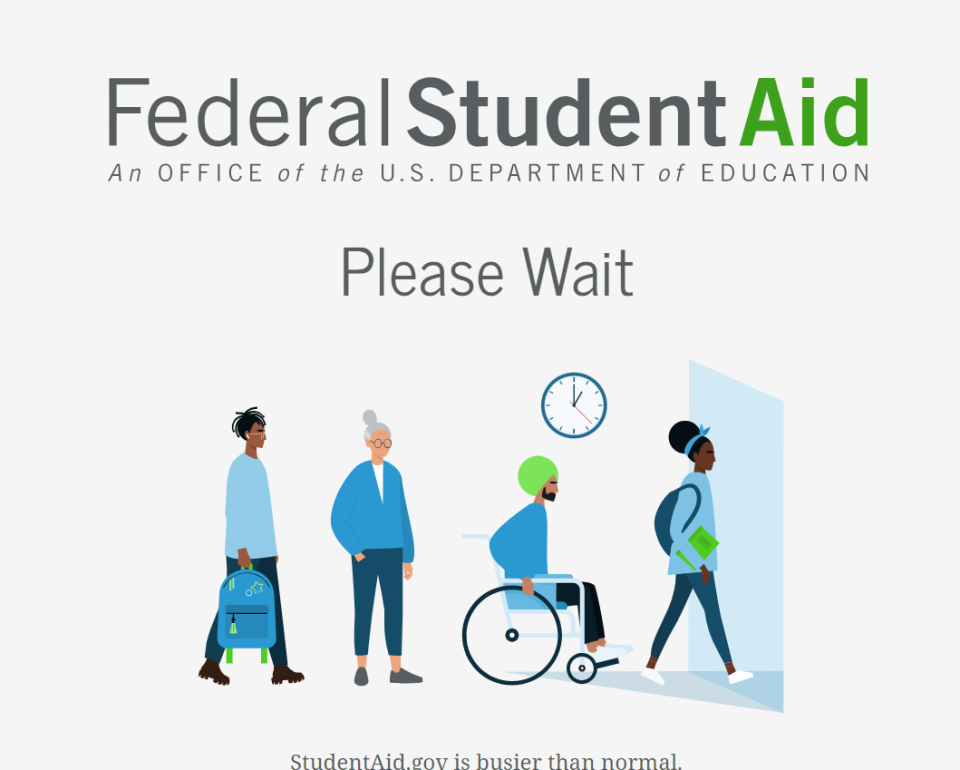There's a new FAFSA form. Why is it often unavailable and how will it affect student aid?
Middle-class families will face the brunt of changes to how the U.S. Department of Education calculates federal financial aid eligibility for college students using the newest version of the FAFSA form, some experts say.
The redesigned and updated FAFSA — released Dec. 31 to implement changes established in the 2020 FAFSA Simplification Act passed by Congress — is a streamlined form that removes barriers to aid for homeless students, reinstates federal aid eligibility for incarcerated people, and increases by 1.5 million the number of low-income students who will qualify for the maximum federal Pell Grants.
It restores Pell Grant lifetime eligibility to students whose school closed while they were enrolled or if the school is found to have misled the student, the Education Department said.
Story continues after photo gallery.
In New Jersey, changes to FAFSA — or Free Application for Federal Student Aid — will increase the number of Pell Grant recipients by 8,802 and the maximum number of Pell recipients by 30,453, the department said.
On the other hand, middle-class families with more than one child enrolled in college can no longer benefit from sibling discounts. That means a family with two children attending college will see their minimum out-of-pocket payments double this year — a change that will catch many unaware, college financial advisers say.
Why is online FAFSA form often unavailable?
The new FAFSA form was released three months later than the usual release date of early October, and it is available only intermittently during the first weeks of a "soft launch."
The FAFSA is "available periodically while we monitor site performance and update the form to provide you with a better experience," said a message on studentaid.gov. The website displays a "Please Wait" page when the form is offline.

More: These New Jersey colleges see boosts in 2024 U.S. News rankings
More: Can ending legacy admissions make the application process fairer at elite colleges?
“When students and families fill out the better FAFSA form, they will find that applying for college financial aid is simpler, easier, and faster than ever before,” said U.S. Secretary of Education Miguel Cardona.
Simpler, shorter FAFSA form
The new process “modernizes an archaic system, simplifies the form, and improves access for underserved students," Cardona said of the most significant overhaul of FAFSA since the Reagan era. The form was last updated under the Obama administration.
Major changes include a shortened, web-first form that will skip questions by offering only relevant ones, reducing the nearly 103 questions on the old form. The paper form is also available. Users have to create a Federal Student Aid account to start a new form.
The new form also requires a direct data exchange between the IRS and FAFSA. In the past it was optional. When it was not used, parents could key in their tax return information manually.

Now, students and family members have to consent to transferring tax information from the IRS. Aid will not be estimated without written consent, a process that may be complicated for separated families or families where parents and children do not get along, some say.
The FAFSA-IRS link has historically been called the IRS Data Retrieval Tool. Under the new FAFSA, the name has been changed to the Financial Aid Direct Data Exchange.
Expected Family Contribution is out
The change that affects middle-class families is the replacement of the old Expected Family Contribution with a new number called the Student Aid Index.
The new Student Aid Index could double the minimum amount families are required to pay when they have two children in college. Under the old FAFSA, the Expected Family Contribution was divided equally between the number of children enrolled. Under the new system, the Student Aid Index is not split between the number of children enrolled but instead becomes the minimum expected payment for each child.
Weighing improved college affordability for students from the poorest families against increased costs to middle-class families that are losing the old sibling discounts has some college financial advisers asking if the feds aren't robbing Peter to pay Paul.
"You're going to see most families aren't aware this is coming and they're going to be shocked when they see how much they're expected to pay," said Robert Falcon, owner and sole proprietor of the Pennsylvania-based firm College Funding Solutions. Falcon runs a wealth management company and is a certified financial planner and certified college financial consultant.

If under the old system a family's expected contribution came out to $30,000, parents could split that equally and pay $15,000 each for their enrolled college students. If the total tuition was $45,000 for each child, they would each be eligible for $30,000 in federal aid. Under the new FAFSA, parents would have to pay a minimum contribution of $30,000 for each child, effectively doubling their out-of-pocket costs.
Bigger hit for divorced or separated families
This could become a double whammy for divorced or separated parents, according to another rule change in the new FAFSA. The new rule requires the parent who provides the most financial support to file the FAFSA forms for the child, where the old rule required the parent with whom the child lived for the most time in the year to file the forms.
Combined with the loss of the sibling discount, this could hit separated families hard.
The old method for separated families was "very straightforward," Falcon said. Financial advisers told students to make sure they spent a few more days with the parent who made less money because that "was a great strategy to leverage" when filing for aid. The new system is going to increase the cost of college overall for students whose parents are divorced, Falcon said.
The rule also does not take into account intangible costs and inconveniences when both parents support the child, making it unclear how much more one of them contributes, said Matthew Carpenter of College Aid Pro, a service that helps clients shop for college funding and aid.
Students at private colleges affected, too
The changes will affect aid awarded to students attending private colleges, too, because most schools use the FAFSA information to determine how much institutional aid they offer students. These colleges will be notified of a different need or different eligibility, Falcon said.
Students who are affected by these changes should plan to file paperwork for a financial aid appeal with the universities they attend or are applying to attend, Falcon said.
Ivy League colleges and many other institutions could be expected to continue honoring sibling discounts, Carpenter said, but many public schools will not offer them anymore.
Students who fill out a second financial aid application accepted by select private colleges called a CSS Profile — short for College Scholarship Service Profile — might find some tuition and cost relief, because of its unchanged sibling discount rule, Falcon said.
"It might be cheaper for some kids to go to a private school that participates in the CSS Profile than it will be for them to go to Rutgers," he said.
Small-business owners could be hit
The older form also exempted small-business owners who hire fewer than 100 employees from filing the value of their business assets. The vast majority of self-employed small-business owners in the country were not required to report their business equity on the old form, Carpenter said.
"Now everybody has to answer that question about the net worth of your business. That is going to hurt a lot of small-business owners," Carpenter said.
They include farmers and people who run businesses in rural areas. Income is already factored into the FAFSA through tax information, but small-business assets and equity were not required on the old form.
"My phones will be ringing off the hook in March and April, and I can't help the people at that point other than telling them to go ahead and to file for an appeal and see if they can get some relief from the colleges," Falcon said.
"The families that need the most help are indeed getting more — in hard, tangible dollars — and in the FAFSA form getting easier," Carpenter said. "The problem here — my fear — is that the government said, look, we need to get more help for families that need the most help. But we're not gonna pay for that. Who is? Middle-class families are.
"By getting rid of the sibling discount, by getting rid of the business owner exception, by making the split household families pay more, it's kind of like, you know, robbing Peter to pay Paul a little bit," Carpenter said.
"On the whole, some amazing changes, some not so — it depends on where your household lies on the spectrum," he said.
Families looking for assistance filling out the new FAFSA can call the New Jersey Higher Education Student Assistance Authority (HESAA) at 609-584-4480 or toll-free at 800-792-8670. New Jersey residents can also email customercare@hesaa.org. HESAA offers free, informational webinars on its website to help fill out FAFSA at Free Application for Federal Student Aid (FAFSA®) (hesaa.org).
This article originally appeared on NorthJersey.com: New FAFSA form sends more college aid to low income students

